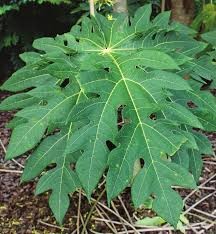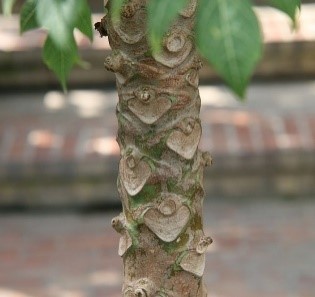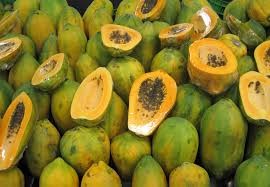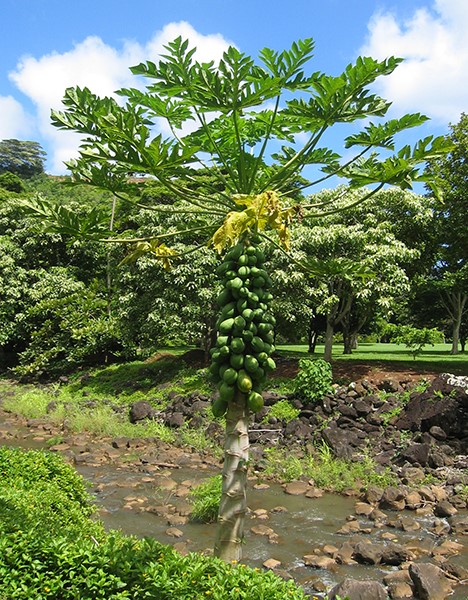Trees
Carica papaya Edward
Carica papaya Edward
Description :
The papaya is a small, sparsely branched tree, usually with a single stem growing up to the height of 5 to 10 m. The bark is light brown to light green, smooth, with thin horizontal ridges. Leaves are 50 to 70 cm in diameter. Flowers are highly scented, male and female are present separately present on the plant Fruit it is a large berry and have spherical or cylindrical shape, fruit is about 15 to 45 cm long and 10 to 30 cm in diameter, its colour is green when it is young, fully ripe fruit is orange in colour and numerous black seeds are present in the large central cavity of fruit.
Distribution :
It is Native to South America and Mexico. It has become naturalized throughout the Caribbean Islands, Florida, Texas, California, Hawaii, and other tropical and subtropical regions of the world. It has also been cultivated in some areas of Asian sub-continent regions like Pakistan and India. It prefers to grow in tropical environment, and it grows well in sandy and well-drained soil. In unfavourable conditions the plant only lives 5 to 6 years.
Uses :
This plant has both edible and medicinal purposes. It is of the major
fruit crops cultivated in tropical and sub-tropical zones. The unripe green
fruit can be eaten cooked, but not raw due to its poisonous latex content. The
ripe fruit of the papaya is usually eaten raw, without skin or seeds. The black
seeds of the papaya are edible and have a sharp, spicy taste. The fruit is also
used for the preventing and treatment of gastrointestinal disorders. It is also
used to cure the nerve pain. The juice of the fruit is used as meat
tenderizers. The leaves are also used to make medicines. This plant is also
used to make medicines for parasitic infection. It has also used to reduce
blood sugar level in the patients of diabetes.



